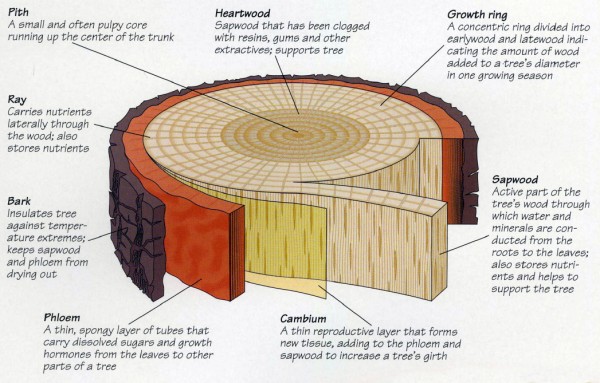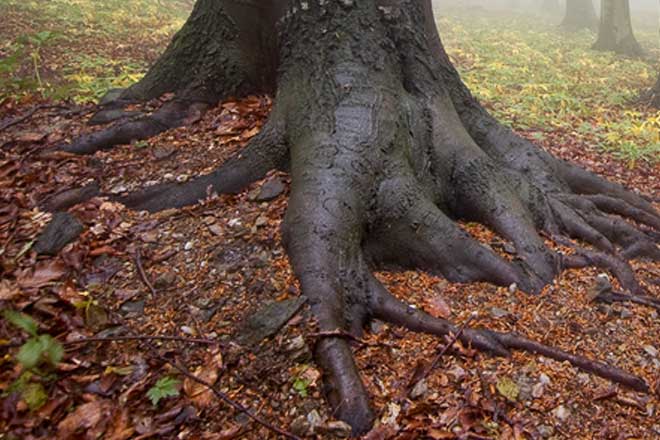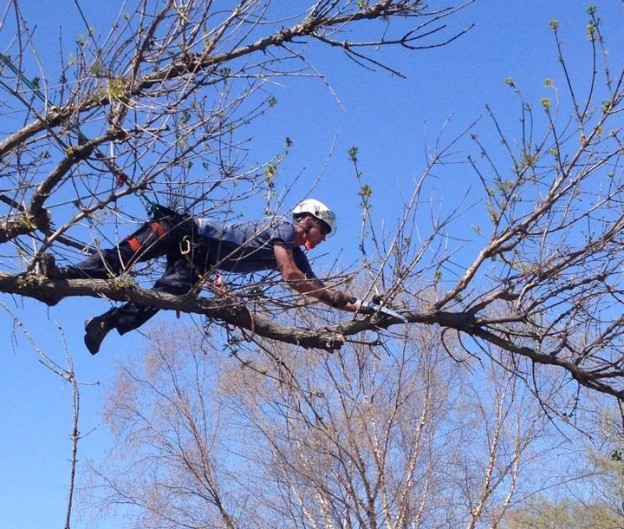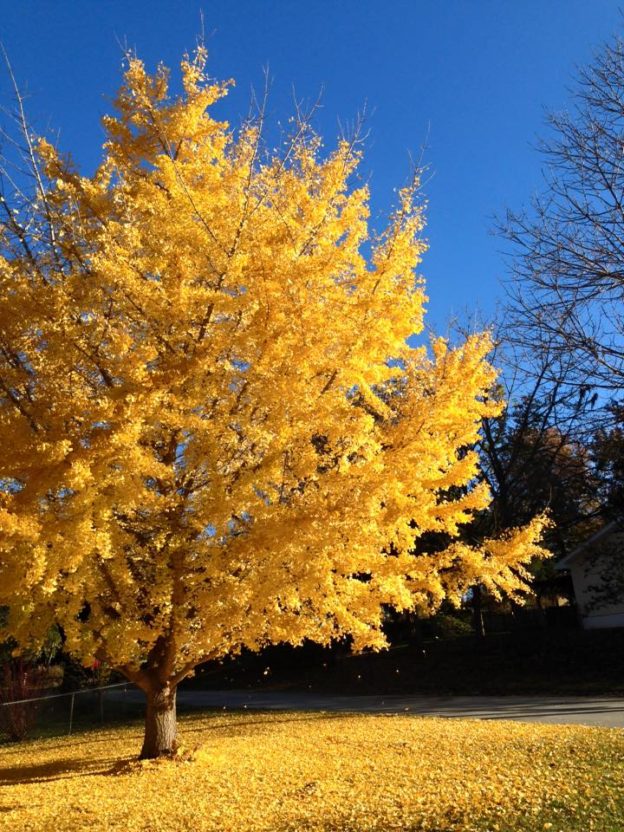
Japanese beetle life cycle. Credit: Rainbow Treecare Scientific Advancements
The Japanese beetle, Popillia japonica, has emerged to wreak havoc on your shade trees. Native to Japan as their name suggests, Japanese beetles are an invasive species that was first detected in the United States in 1916 (Rainbow Treecare, 2021). Due to its lack of predators in the US, it has been able to quickly spread through most states on the eastern side of the Mississippi River.

Close-up of a Japanese beetle. Credit: Arborjet.
You can identify the Japanese beetle based on its iridescent and glossy appearance, with a green head and copper wing coverings. It has small tufts of white along the outside of its wing coverings.
The beetle feeds on over 400 species of shade trees and bushes (Rainbow Treecare, 2021). The beetle feeds by eating the leaf matter in between the leaf’s veins, leaving a skeleton-like appearance. If this happens to enough leaves, the beetles can easily kill your trees and shrubs, as the plant will no longer be able to photosynthesize. As well, the beetles send out a signal to other beetles in the area when they have found an acceptable plant host, sending more beetles into your yard.
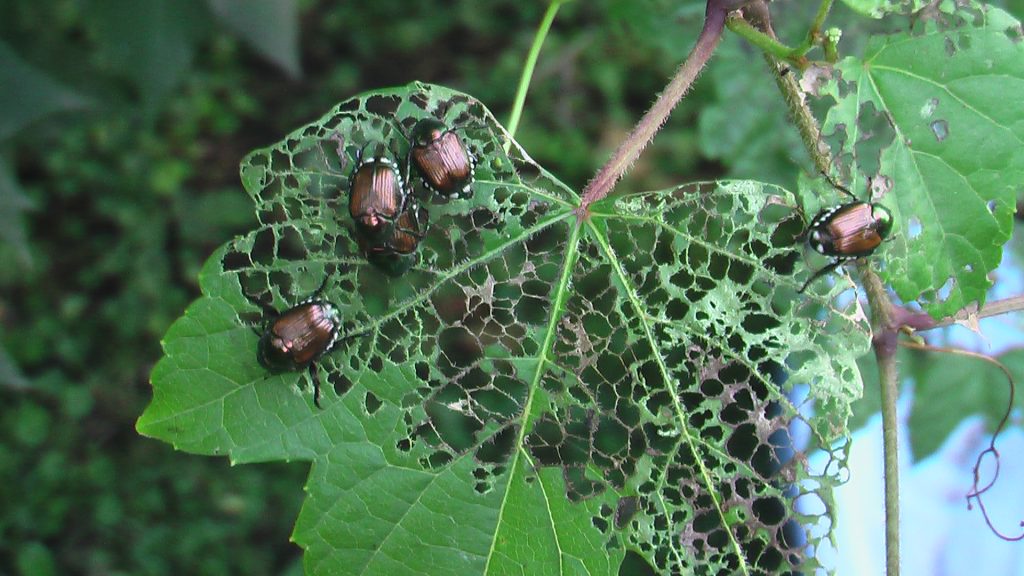
Japanese beetles feeding on a leaf. Credit: The Tree Center
So how do you get rid of Japanese beetles? One effective solution is a combination of a soil injection as well as a foliar spray to take care of any live beetles currently feeding on the leaves. It is important to begin foliar sprays at the beginning of adult feeding on plant matter, otherwise, the infestation can grow out of hand as more foliage is destroyed and more beetles come to feed. If you think you have a Japanese beetle infestation, please contact our office at 417-863-6214 and we can schedule a time for our Plant Healthcare technician to come to take a look at your trees and discuss your treatment options.
Sources:
“Japanese Beetle.” Arborjet, 23 July 2020, arborjet.com/problems_solutions/japanese-beetle/.
“Japanese Beetles Diagnostic Guide.” Rainbow Treecare Scientific Advancements, 2021, www.treecarescience.com/tree-problems/insects-mites/japanese-beetles-diagnostic-guide?utm_source=Rainbow&utm_medium=email&utm_campaign=navigator&dm_i=41N9%2CEQRW%2C5LNQWP%2C1JTLZ%2C1.
Masons, Fergus. “How to Get Rid Of Japanese Beetles.” The Tree Center, 2 Mar. 2016, www.thetreecenter.com/how-to-get-rid-of-japanese-beetles/.



